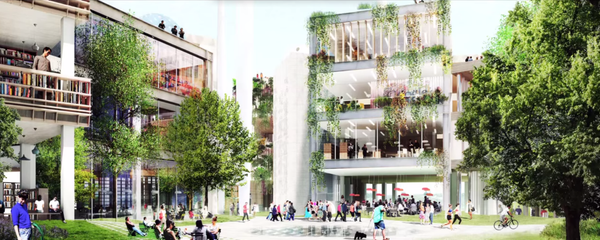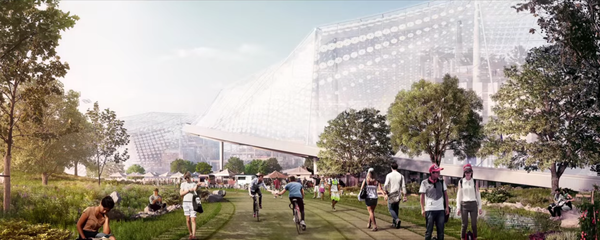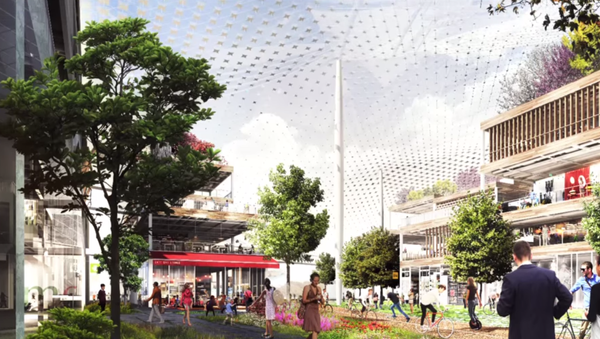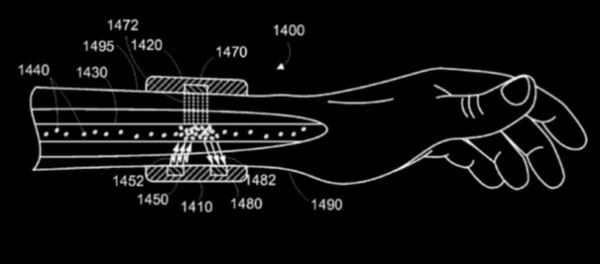It’s not the first time automatons have been part of construction plans. Perhaps you’ve heard whispers of the Shimizu Mega-City Pyramid, a proposed project to build a massive floating metropolis over Tokyo Bay. Over 14 times as high as the Great Pyramid of Giza, it would house nearly 1 million people and be immune to high winds, earthquakes, and tsunamis.
Don’t expect to see it on Japan’s horizon any time soon. The structure would be so large and heavy that it relies on carbon nanotube technology which doesn’t exist yet. But once that hurdle is cleared, robots would begin to assemble the building.
Google isn’t thinking that big. Not at this point, anyway. But the company does need a larger headquarters capable of housing 20,000 employees, and it’s hired the European architectural firms of Bjarke Ingels Group and Heatherwick Studio to create a corporate utopia in Silicon Valley.
It may not float, but the blueprints are no less impressive.
For starters, there’s no roof. In place of concrete, the interior will be protected by four giant sections of glass which will drape over regularly placed steel pillars and let in limitless amounts of natural light. This will also allow the building to regulate its own indoor climate.

There also won’t be any stairs. Instead, large plates making up the floor will slope upward, for a gradual, easy climb between levels. Much of that floor will be covered in grass, as the headquarters will blend seamlessly between indoor and outdoor space, opening onto acres of parks and marshland.
Even stranger, the building designed for thousands of employees won’t technically have any offices either, and this is where the robots come in. Rooms beneath the glass canopy will consist of large, open-air boxes, but rather than being permanent installations, they will be lifted, slid, hauled, lowered, and stacked, as needed, by an in-house fleet of crane robot hybrids Google is calling crabots.
The robots aren’t just constructing the headquarters; they’re a permanent fixture.
"We have studied different options to create a lightweight, flexible and ‘hackable’ system for the building of the interior structures," read new documents released by Google this week, in relation to those crabots.
"Through the life of the buildings this [will] allow reconfiguration and maintenance…of the canopy envelope from within."

Think of it like the droids who roam the halls the Axiom spaceship in Wall-E. Except instead of bringing you a cheeseburger and soda at the touch of a button, the crabots could deliver an entire room with your work desk and computer.
Some critics of the design have questioned the building’s practicality. Given the near-perfect weather of Silicon Valley, many question the need for an uber-expensive glass canopy. Not to mention the poor soul – or robot – who’ll have to clean all those windows.
Others are also unsure about the crabot logistics. Implementing a stable electrical system in a building that is constantly shapeshifting could present its own challenge. Some sort of wireless, Nikola Tesla-inspired grid could be one solution, hypothetically, but that wouldn’t solve the similar – though no less critical – plumbing question.
Still, the sky’s the limit when you have pockets as deep as Google’s.
"This is a company worth $75 billion in cash on their balance sheet," Ashim Mehra, vice president at Baron Fund, told Bloomberg. "If they want to use some of it to build an office that facilitates a better work environment and better collaboration, I think investors are generally supportive."
Even with that massive budget, Google may have to downsize some of its plans. An city council vote on Tuesday night decided that a large chunk of the land on which Google planned to build would instead go to LinkedIn. The principal reason given for that decision was that LinkedIn’s blueprints seemed a bit more feasible.
You’re dreaming too big, Google. You’re dreaming too big.




